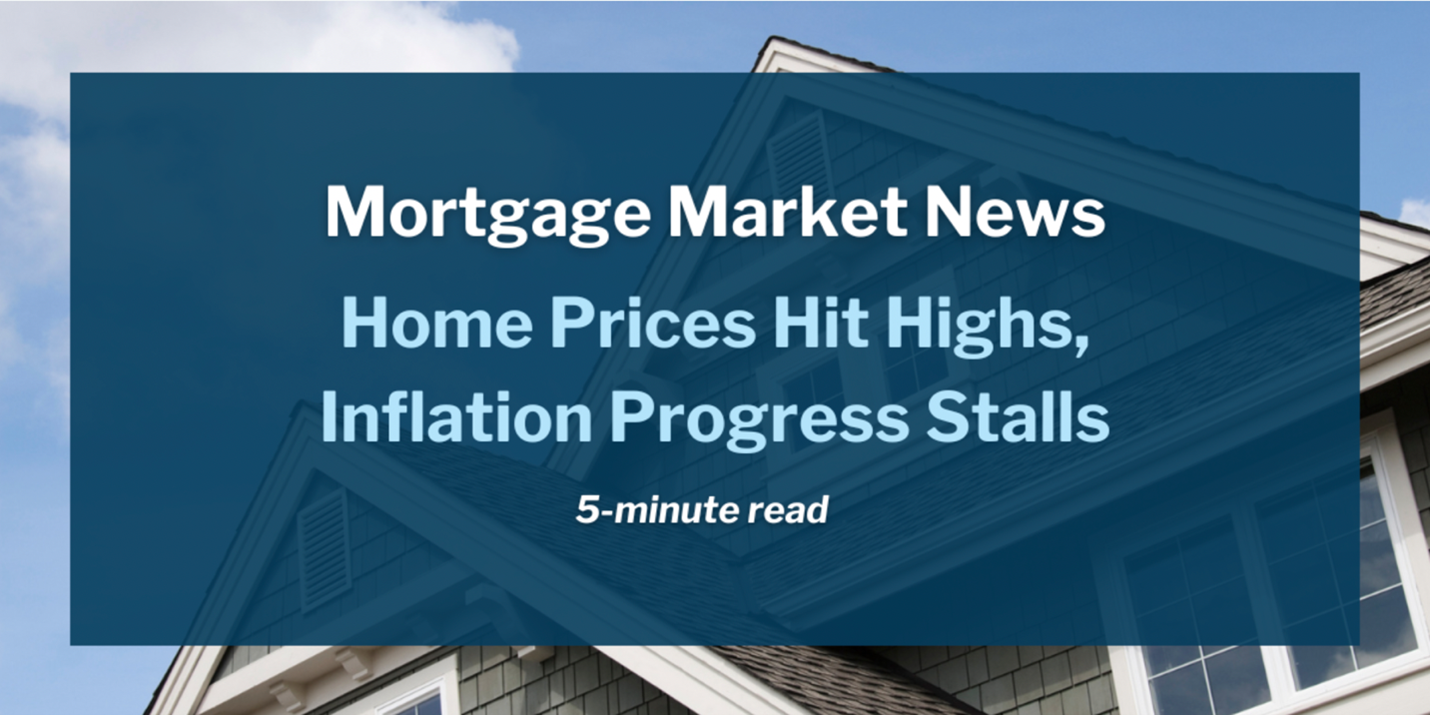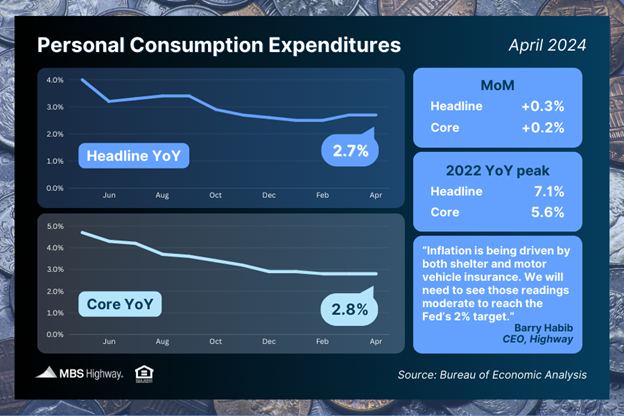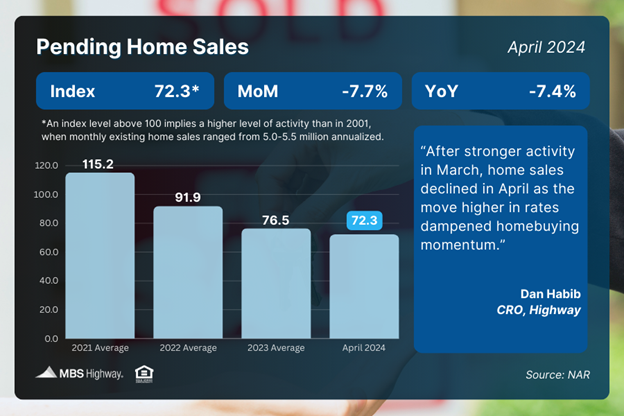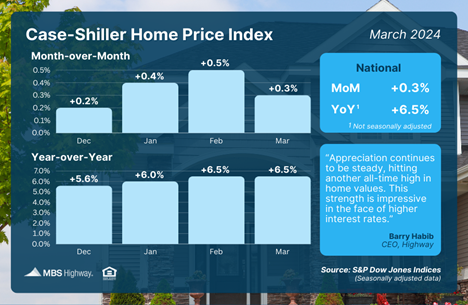-
- 05 JUN
Inflation Remains Stubborn

Week of May 27, 2024 in Review
Progress towards the Fed’s 2% inflation target remains stalled while signed contracts on existing homes fell in April. Meanwhile, home prices continue to hit new highs this year. Read on for these stories and more:
▪ Inflation Not Heating Up But Not Cooling Off
▪ Pending Home Sales Plunge in April
▪ Home Price Gains Continue
Inflation Not Heating Up But Not Cooling Off
April’s Personal Consumption Expenditures (PCE) showed that headline inflation rose 0.3% from March, with the year-over-year reading holding steady at 2.7%. Core PCE, the Fed’s preferred method which strips out volatile food and energy prices, also rose by 0.2% monthly. The year-over-year reading remained at 2.8%, stalling progress toward the Fed’s 2% target.

What’s the bottom line? The Fed has been working hard to tame inflation, hiking its benchmark Fed Funds Rate (which is the overnight borrowing rate for banks) eleven times between March 2022 and July 2023. These hikes were designed to slow the economy by making borrowing more expensive and lowering the demand for goods, so pricing pressure and inflation would decline.
The Fed has held rates steady since last September because inflation had been making good progress lower late last year before stalling more recently. Fed members have emphasized that they do not expect to cut rates until they’re confident that inflation is moving sustainably towards their 2% target.
However, a sharp rise in the unemployment rate (which has been in a narrow range between 3.7% and 3.9% since last August) could also impact the Fed’s timing for rate cuts, given their dual mandate of price stability and maximum employment. The unemployment rate for May will be reported this Friday.

Pending Home Sales Plunge in April
Pending Home Sales fell 7.7% from March to April per the National Association of REALTORS® (NAR), coming in well below estimates of a modest decline. Sales were also 7.4% lower than they were a year earlier. This report measures signed contracts on existing homes, making it an important forward-looking indicator for closings on these homes as measured in the Existing Home Sales report.
What’s the bottom line? The Pending Home Sales index took a big turn lower in April after a strong reading in March, with NAR’s Chief Economist, Lawrence Yun, explaining, "The impact of escalating interest rates throughout April dampened home buying, even with more inventory in the market."
Home Price Gains Continue

The Case-Shiller Home Price Index, which is considered the “gold standard” for appreciation, showed home prices nationwide rose 0.3% from February to March after seasonal adjustment. Home values in March were also 6.5% higher than a year earlier, unchanged from the previous report.

The Federal Housing Finance Agency’s (FHFA) House Price Index also reported a 0.1% jump in home prices from February to March, with prices 6.7% higher than the previous year. Note that FHFA does not include cash buyers or jumbo loans, and these factors account for some of the differences in the two reports.
What’s the bottom line? March’s report “boasts another all-time high” for home prices, confirmed S&P DJI’s Head of Commodities, Brian D. Luke. “On a seasonal adjusted basis, national home prices have reached their ninth all-time high within the past year, with all 20 metropolitan markets posting positive annual gains for the fourth consecutive month, indicating widespread and sustained growth in the housing sector.”
What to Look for This Week
We’ll see more appreciation data from CoreLogic on Tuesday, and then labor sector news will dominate the headlines. Look for updates on job openings Tuesday, private payrolls Wednesday, unemployment claims Thursday, and nonfarm payrolls and the unemployment rate Friday.
